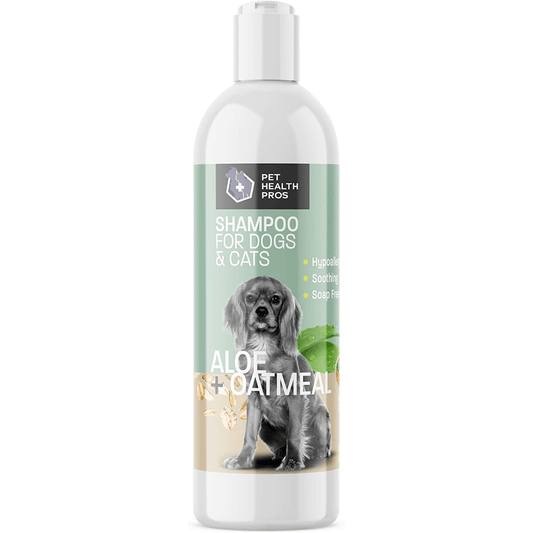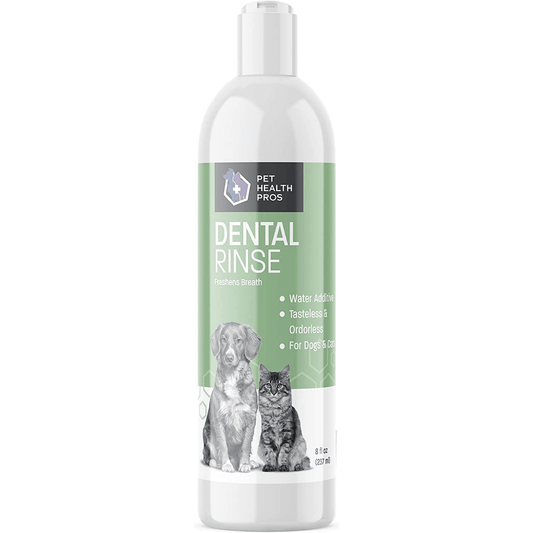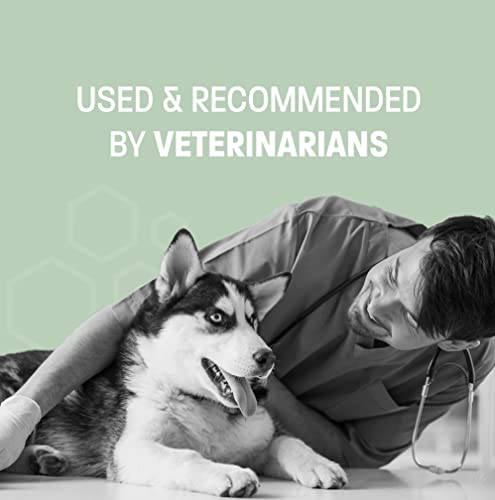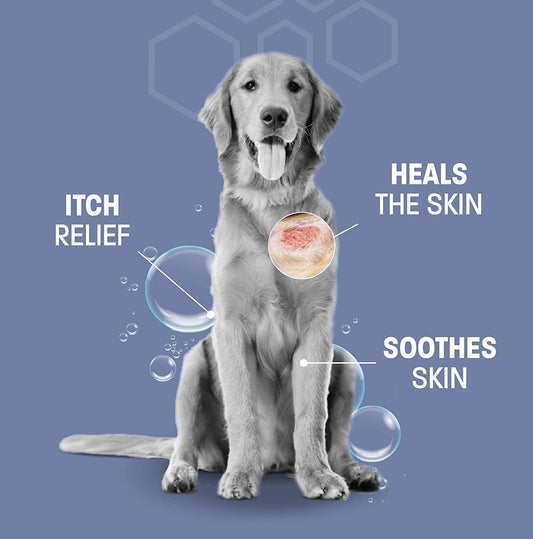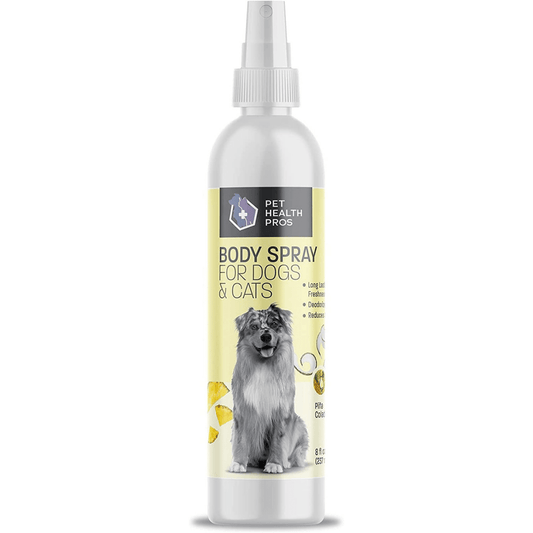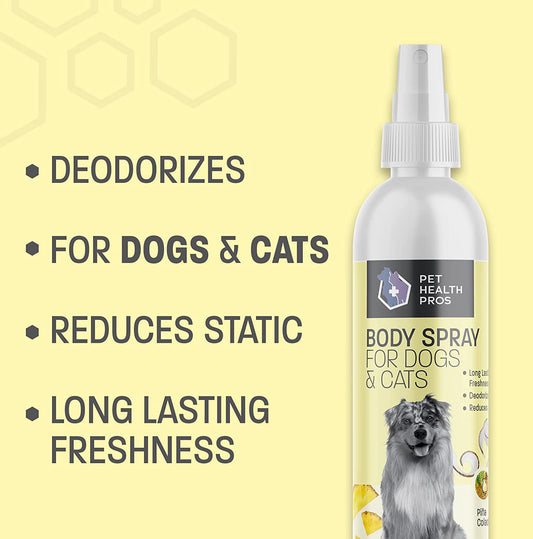Keeping your furniture safe from your dog's chewing habits can be a challenge. Fortunately, there are effective homemade dog chewing deterrents that can help protect your belongings while also ensuring your furry friend is happy and healthy. In this article, we will explore various reasons why dogs chew, household items that can deter chewing, DIY recipes for homemade deterrents, training techniques to reinforce good behavior, and safety precautions to consider.
Key Takeaways
- Understanding the reasons behind your dog's chewing can help you address the issue effectively.
- Homemade deterrents, like vinegar and citrus sprays, can be safe and effective alternatives to commercial products.
- Training your dog alongside using deterrents is crucial for long-term success.
- Always test homemade products on a small area to ensure your dog does not have an allergic reaction.
- Providing mental stimulation and exercise can help reduce your dog's desire to chew on furniture.
Understanding Why Dogs Chew
Dogs chew for various reasons, and understanding these can help you manage their behavior effectively. Chewing is a natural instinct for dogs, and it can stem from several factors:
Natural Instincts and Behavior
- Chewing is a part of a dog's natural behavior. It helps them explore their environment and can be a way to relieve stress.
- Dogs have a strong instinct to chew, which is rooted in their ancestry. Wild canines chewed on bones and other materials to keep their teeth clean and healthy.
- Chewing can also be a way for dogs to communicate their needs or feelings.
Teething in Puppies
- Puppies go through a teething phase, usually between 3 to 6 months of age. During this time, they may chew more as their baby teeth fall out and adult teeth come in.
- Providing appropriate chew toys can help alleviate discomfort during this stage.
- Signs of teething include increased chewing, drooling, and sometimes irritability.
Boredom and Anxiety
- Dogs that are left alone for long periods may chew out of boredom or anxiety. Boredom can lead to destructive chewing, which can damage furniture and other household items.
- Signs of anxiety in dogs can include excessive barking, pacing, and destructive behavior.
- Engaging your dog in regular exercise and providing mental stimulation can help reduce anxiety-related chewing.
Understanding why your dog chews is crucial for addressing the behavior effectively. By recognizing the underlying causes, you can implement better strategies to manage and redirect their chewing habits.
In summary, dogs chew due to their natural instincts, teething, and sometimes boredom or anxiety. By understanding these reasons, you can take steps to provide appropriate outlets for their chewing needs and keep your furniture safe from damage.
Highlights
- Natural Instincts: Chewing is a natural behavior for dogs.
- Teething: Puppies chew more during teething.
- Boredom and Anxiety: Chewing can be a sign of boredom or anxiety.
Common Household Items That Deter Chewing
Dogs often chew on furniture and other household items, but there are several common household items that can help deter this behavior. Using these items can protect your belongings while keeping your dog safe.
Vinegar and Citrus Sprays
Vinegar and citrus scents are known to be unpleasant for dogs. You can create a simple spray by mixing equal parts of water and white vinegar or lemon juice. Spray this mixture on furniture or areas where your dog tends to chew. Here are some tips:
- Use a spray bottle for easy application.
- Test a small area first to ensure it doesn’t damage the surface.
- Reapply as needed, especially after cleaning.
Essential Oils to Avoid
While some essential oils can be safe for dogs, others can be harmful. It’s important to avoid using:
- Tea Tree Oil: Can be toxic to dogs.
- Cinnamon Oil: May cause skin irritation.
- Pine Oil: Can lead to respiratory issues.
Always check with your vet before using any essential oils around your pets.
Using Bitter Apple Spray
Bitter apple spray is a popular deterrent for dogs. It has a taste that dogs find unpleasant, which can help stop them from chewing on furniture. Here’s how to use it:
- Purchase a bitter apple spray from a pet store.
- Spray it on the items you want to protect.
- Monitor your dog’s reaction and reapply as needed.
Remember, while these deterrents can help, it’s also important to address the underlying reasons why your dog is chewing. Providing proper training and mental stimulation can make a big difference.
DIY Homemade Dog Chewing Deterrent Recipes
Dogs often chew on furniture and other household items, but you can create effective deterrents at home. Here are some simple recipes to help keep your furniture safe from your furry friend.
Simple Vinegar and Citrus Mix
A mixture of vinegar and citrus can be a powerful deterrent. Dogs dislike the strong smell of vinegar and citrus fruits. To make this mix:
- Combine equal parts of white vinegar and water.
- Add the juice of one lemon or orange.
- Pour the mixture into a spray bottle.
- Spray on furniture and other items you want to protect.
Essential Oil Blends for Safety
Some essential oils can deter chewing while being safe for dogs. However, avoid oils that are toxic to pets. Here’s a safe blend:
- 2 drops of lavender oil
- 2 drops of peppermint oil
- 1 cup of water
Mix these ingredients in a spray bottle and apply to areas where your dog tends to chew.
How to Make Bitter Apple Spray at Home
Bitter apple spray is a well-known deterrent. You can make your own by following these steps:
- Mix 1 cup of apple cider vinegar with 1 cup of water.
- Add 1 tablespoon of lemon juice.
- Shake well and pour into a spray bottle.
- Spray on furniture and let it dry before allowing your dog near it.
Remember, consistency is key when using these deterrents. Regularly apply them to maintain their effectiveness and help your dog learn what is off-limits.
By using these homemade recipes, you can help protect your furniture while ensuring your dog stays safe and happy!
Training Techniques to Complement Deterrents
Positive Reinforcement Methods
Using positive reinforcement is one of the best ways to train your dog. This means rewarding your dog when they do something good. Here are some effective methods:
- Use treats: Give your dog a small treat when they chew on their toys instead of furniture.
- Praise them: Use a happy voice to praise your dog when they choose the right item to chew.
- Playtime: Spend time playing with your dog to encourage good behavior.
Redirecting Chewing Behavior
Sometimes, dogs need help understanding what they can chew. Here are some tips to redirect their chewing:
- Provide chew toys: Make sure your dog has plenty of safe toys to chew on.
- Use a command: Teach your dog a command like "leave it" to stop them from chewing on furniture.
- Distract them: If you catch your dog chewing on something they shouldn’t, distract them with a toy or a game.
Consistency and Patience in Training
Training your dog takes time and effort. Here are some important points to remember:
- Be consistent: Always use the same commands and rewards.
- Stay patient: It may take time for your dog to learn what is acceptable to chew.
- Practice regularly: Short, daily training sessions are more effective than long, infrequent ones.
Remember, training is a journey. With patience and consistency, your dog will learn to chew on the right things.
Safety Precautions When Using Deterrents
When using homemade dog chewing deterrents, it’s essential to prioritize your pet's safety. Always test any new deterrent on a small area first to ensure it doesn’t cause irritation. Here are some important precautions to consider:
Testing for Allergic Reactions
- Before applying any deterrent, check for potential allergies.
- Use a small amount on your dog’s skin and observe for any reactions.
- If you notice redness or swelling, discontinue use immediately.
Avoiding Toxic Ingredients
- Ensure that all ingredients are safe for dogs. Some common household items can be harmful.
- For example, avoid using essential oils that are toxic to pets, such as tea tree oil or cinnamon oil.
- Always read labels and do thorough research on any ingredient you plan to use.
Proper Application and Storage
- Apply deterrents in well-ventilated areas to avoid overwhelming your dog with strong smells.
- Store all homemade deterrents out of reach of pets to prevent accidental ingestion.
- Label your mixtures clearly to avoid confusion.
Keeping your dog safe while deterring unwanted chewing is crucial. Always prioritize their health and well-being when choosing and applying deterrents.
By following these safety precautions, you can effectively protect your furniture while ensuring your dog's safety and comfort. Remember, a little caution goes a long way!
Understanding Your Dog's Needs
Dogs are more than just pets; they are companions that require attention and care. Understanding their needs is essential for their well-being and can help prevent unwanted behaviors like chewing on furniture. Here are some key areas to focus on:
Providing Adequate Exercise
- Daily walks: Aim for at least 30 minutes of exercise each day.
- Playtime: Engage in interactive games like fetch or tug-of-war.
- Socialization: Allow your dog to interact with other dogs and people.
Mental Stimulation and Toys
- Puzzle toys: These can keep your dog engaged and mentally active.
- Training sessions: Teaching new tricks can be a fun way to stimulate your dog’s mind.
- Rotate toys: Keep things fresh by changing out toys regularly.
Creating a Safe Chewing Environment
- Designate chew items: Provide safe chew toys to redirect their chewing behavior.
- Limit access: Keep valuable items out of reach to prevent chewing.
- Supervise: Watch your dog during playtime to guide their behavior.
Understanding your dog's needs is crucial for their happiness and can help prevent destructive behaviors. A happy dog is less likely to chew on your furniture!
By focusing on these areas, you can create a nurturing environment that meets your dog's physical and emotional needs, reducing the likelihood of unwanted chewing behavior. Remember, a well-exercised and mentally stimulated dog is a content dog!
Every dog has unique needs that must be understood for their well-being. By paying attention to their behavior and health, you can ensure they live a happy life. For more tips on how to care for your furry friend, visit our website today!
Final Thoughts on Homemade Dog Chewing Deterrents
In conclusion, using a homemade dog chewing deterrent can be a simple and effective way to protect your furniture and belongings. By combining safe ingredients like vinegar, citrus, or essential oils, you can create a spray that keeps your dog from chewing on things they shouldn't. Remember to test any mixture on a small area first to ensure it doesn't damage your items. With patience and consistency, your dog can learn to avoid chewing on furniture, helping to keep your home safe and sound.
Frequently Asked Questions
Why do dogs chew on furniture?
Dogs chew on furniture for several reasons. It can be a natural instinct, especially when they're bored or anxious. Puppies also chew to relieve discomfort from teething.
What homemade ingredients can I use to stop my dog from chewing?
You can use items like vinegar, citrus, and bitter apple spray. These ingredients can help deter your dog from chewing on furniture.
Is vinegar safe for my dog?
Yes, vinegar is generally safe for dogs when used in small amounts. However, it's important to test a small area first and ensure your dog doesn’t have an allergy.
How can I train my dog not to chew on furniture?
Training your dog involves using positive reinforcement. Reward them when they chew on their toys instead of your furniture.
What should I do if my dog has an allergic reaction?
If you notice any signs of an allergic reaction, like itching or swelling, stop using the deterrent immediately and consult your veterinarian.
How can I keep my dog entertained to reduce chewing?
Make sure your dog gets plenty of exercise and provide them with toys to keep their mind active. This can help reduce boredom and anxiety.


